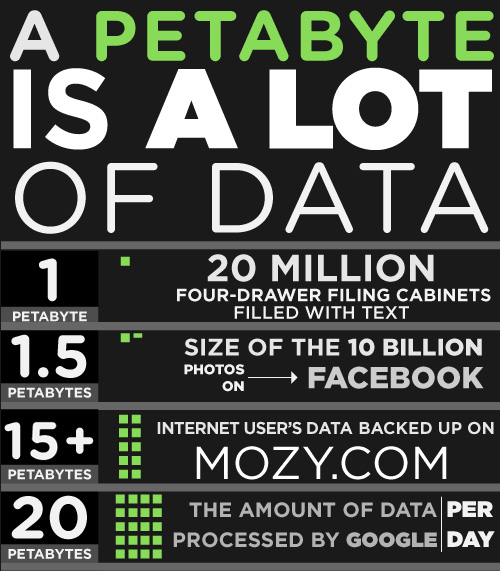Last year, Sia wrote in a blog post:
We do not only want to empower individual users; we want to also empower companies like Dropbox, Netflix, Slack, and so many others.
2018 is Siacoin’s year. Actually, the last three years have been Sia’s years. They’ve been building a downloadable, decentralized, cloud storage network for users to:
- Securely upload files across a global network of 50 countries, 6 continents, and nearly 1,000 hosts
- Sell storage space
- Mine Siacoin
2018 is the year Siacoin departs from its experimental phase and enters the realm of early enterprise use, converting blockchain enthusiasts to early adopters and moving one step closer towards capturing their due piece of the $200 billion cloud storage market.
But how?
- Decentralization: Removing a central governing authority over transactions, coin issuance, and file contract management.
- Encryption: Placing decryption keys in the hands of the renter, decreasing ultimate yield for hackers.
- Redundancy: Storing files across multiple hosts, allowing 24/7 renter access.
- Affordability: Significantly lowering traditional storage costs via competitive marketplace.
To read up on Siacoin’s history, competitors, and team, check out our What is Siacoin? article.
Disadvantages of Traditional Cloud Storage
Before getting into Sia’s 2017 accomplishments and 2018 roadmap, let’s refresh our memories by reviewing several core issues plaguing traditional cloud storage platforms and providers.
- Control: Cloud storage places your files and data in the hands of someone else, allowing them to delete your data, change terms of services, and effectively hold your data hostage.
- Security: Although cloud data and files aren’t shared, the facilities its housed in are, making it a “juicier” target for hackers. Look no further than the iCloud leaks, a result of a single point of vulnerability in the iCloud API.
- Reliability: Even the most reliable cloud platforms crash and go offline. Unstable cloud storage systems are a liability, and no user wants to trust a financially unstable or failure-prone provider.
- Cost-efficiency: The cost of cloud storage extends far beyond the costs of hard drives, requiring a significant amount of overhead, including power and cooling, security and backup, management fees, and various other costs. At present, Amazon S3 charges $23/TB/month, while Sia charges $1/TB/month.
Take, for instance, Amazon Drive and the removal of their “unlimited” cloud storage plan in mid 2017. As a product of a centralized company with monolithic decision-making, it’s not surprising they exercised their right to do what they wanted when they wanted, echoing an all too familiar tune in the cloud storage arena.
When using a centralized cloud storage service, users are backed into a corner of mandated trust. They’re left no other option but to hope such service isn’t discontinued someday due to ramshackle and amenable business practices.
Sia provides users with an assurance of tomorrow, omitting a kill switch and self-anointed triggerman in favor of an impermeable decentralized infrastructure, keeping files safe and accessible regardless of financial or political change.
Sia’s 2017 Key Accomplishments
In order to get an idea of what Sia has on the docket in 2018, let’s take a look at what they accomplished in 2017.
In just one year, Sia underwent a substantial product and service overhaul, passing the billion dollar market cap mark, and ultimately cementing itself as the frontrunner of the Internet’s premier storage layer.
Here are the key features and notable accomplishments Sia rolled out:
Product
Sia released their fourth major product update since January 2017, Sia v1.3.1, significantly improving the overall Sia renting experience through increased data compression, decreased upload time, and a better file repair process.
The release was a culmination of nearly five months of work by Sia’s core team and twenty community contributors. It was an important affirmation of Sia’s open-source and community-engaged vision, integral for a true decentralized storage platform.
Funding
In 2017, Sia’s parent company, Nebulous, received over $1.65 million in funding from venture capital grants and angel investors, including a grant from China’s Xiaolai Li, founder of one of China’s most influential cryptocurrency venture capitals.
Additionally, Sia’s presale of their Obelisk miner generated almost $4 million in revenue, further funding Sia’s future development and growth. Sia noted the majority of the funding revenue will be put towards software development.
Pre-2017, Sia largely operated with limited funds, yet still delivered the first truly decentralized cloud storage product on the market, making 2018 a crucial year to watch to see whether Sia effectively allocates and deploys their newly acquired capital.
Network
At the beginning of January, Sia was comprised of roughly 75 hosts, providing less than 500 TB of storage space across the network and a total contract size of 35 TB. As of January 7, 2018, Siacoin has experienced a nearly 1200% increase in hosts and a 1000% increase in paid file contracts, now supporting over 1,000 hosts, 3 petabytes of space (that’s 3,000 TB), and a total contract size of 400 TB.

Most notably, Sia achieved a 3% utilization rate across their network, meaning roughly 112 TB of their 3.3 PB was being actively used to store files, a number expected to balloon post-2018 file sharing release.
Community
While Sia opted for product development over a concentrated marketing and PR strategy, they still enjoyed a near 2100% increase across their various community and social media channels, including: Facebook, Reddit, Twitter, and Discord.
Most recently, Sia brought on a full-time community manager to oversee their 110,000+ strong community and launch an official educational YouTube channel (upcoming).
Bitmain Miners and Sia’s Potential Soft-Fork
In early 2018, Sia experienced a dividing rift between hosts, renters, miners, and contributors after Bitmain — a Chinese-based bitcoin miner and designer of ASIC chips — announced the release of their Blake2b ASIC miner (A3), designed specifically for mining Sia. Millions of dollars in A3 mining hardware was sold overnight, before Sia’s development team was even notified of its existence.
Many long-term Sia community members called for a fork, as the A3 release stood to change Sia’s overall landscape, potentially availing Sia to Bitmain acting maliciously by mining enough empty Sia blocks to damage Sia’s network, or by executing a 51% attack. Additionally, A3s threatened to push out small-time miners due to increased hash power and mining difficulty.
7 days later, Sia’s VP of Operations released an official response touting the benefits of ASICs and refuting the possibility of a 51% attack, citing an invalidating soft fork as contradictory to their goal of providing a decentralized and competitive ecosystem. Sia acknowledged that although Bitmain does pose a serious threat to the Sia network, a soft fork would ultimately compromise core Sia values, but will be employed as a protective measure should Bitmain act destructively.
To read up on both sides of the coin, check out these two articles on whether Sia should or shouldn’t soft fork.
Sia’s 2018 Roadmap
Now, on to Sia’s roadmap, which their Trello board has divided into three main timeframes.
- Short-term development
- Medium-term development
- Long-term development
Short-Term
Peer-to-Peer File Sharing Between Sia Users
Post-Pirate Bay verdict and Megaupload arrests, more users are seeking out secure, encrypted, uncensored, and private file sharing platforms. Cue Sia, and possibly their most anticipated feature of Q1 2018, simple peer-to-peer file sharing between Sia users.
Peer-to-peer file sharing allows users to provide file access to others without having to take it off the cloud. It has the potential to grow the platform very quickly by initiating a new use case, while ultimately increasing network utilization.
Community Growth and Brand Overhaul
Favoring a viable product over aggressive marketing and promotion in the past, Sia is opting for the latter in 2018, and has already started with their:
This is all a concentrated effort to further their philosophy and vision through simplicity, while also readying themselves for mainstream adoption.
Already boasting a top 5 development team by activity, Sia is prioritizing community growth and engagement in 2018. Core Sia members will be updating communities and moderators on new rules, adding moderators, and implementing additional scalable community protocols, including a “mysterious” final piece to their social media puzzle (upcoming).
UX & UI Clarity
While Sia’s UI has served the community well, Sia is working with Sia and Decred mining pool, Luxor, to enhance UI experience and make Sia a premier software in the blockchain space. Revamped UX and UI will make Sia far more accessible to the average person, allowing easier setup and encouraging frequent use.
Additionally, Sia is working towards:
- Ability to recover files only using one’s wallet seed and from an outdated backup of the renter directory
- Support for partial downloads
- Reducing form file contracts from 1 hour to 5 minutes, ultimately shortening the time needed to process the contract
Medium-Term
Enterprise Partnerships
Once file sharing is launched, Sia will be looking to boost partnerships, seeking out companies like Dropbox and Netflix in hopes of acting as their storage and distribution framework. After all, decentralized file sharing will allow businesses to cut storage and security costs, save time, increase global and device access, and fortify file recovery.
According to a January 7th blog post, Sia expects to have “several meaningful partnerships with enterprises” by the end of 2018.
Price vs. Performance Preferences
Integral to the current Sia network is a host scoring system, where hosts receive a score based on their participation and contracts based off that score. The higher the score, the more contracts a host will receive.
Sia is taking that one step further, letting hosts set their prices and subsequently rewarding those with lower storage prices with an increased overall score, which will generate more contracts. Users will also be able to whitelist or blacklist hosts, to establish long-running storage relationships or prevent the hosting of illegal or other unsavory material.
Proof-of-Burn
Proof-of-burn is an alternate securing process by which Sia hosts will “burn” coins — by sending them to a verifiably unspendable address that can’t be used — thus removing them from circulation. An alternative to proof-of-stake (PoS) and proof-of-capacity (PoC), PoB is used to prove host legitimacy, by having them put up (burn) collateral (Siacoins) to necessitate trust.
PoB nearly eliminates the possibility of a Sybil attack — where a malicious user sets up numerous false hosts all controlled by the same back-end hardware — by making costs impractical and costly due to required burning.
Some other notable medium-term goals include:
- Video streaming
- Support for tiny files
- Renter scalability
- Ability to see host uptime
- A bandwidth limiter for network congestion
Long-Term
Sia lists two goals for the long-term on their roadmap:
- File sharing with non-Sia users
- Support for mobile wallets and other lite clients
Neither have yet been broadcasted in great detail, however. We’ll have to wait until Sia releases more info about these goals.
Conclusion
Sia’s “very long-term” goal isn’t too hard to guess, as they are “aiming to become the storage layer of the decentralized internet, ensuring privacy and redundancy through decentralization, and entirely replacing existing cloud storage providers.”
Should Sia execute their ambitious 2018 roadmap, it will solidify a stronghold in the cloud storage market, and ultimately, position itself to take on the likes of Amazon S3, converting other major companies along the way.
Related: The Top 50 Cryptocurrencies

